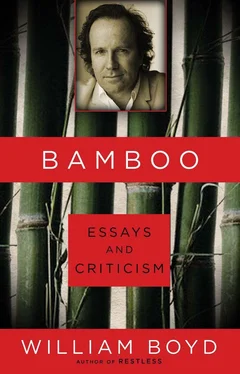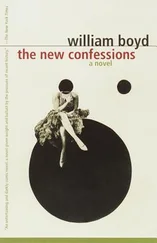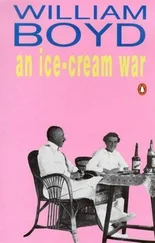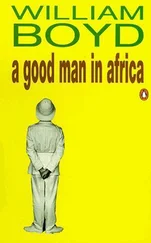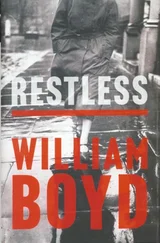“He had everything, but he had nothing,” as one ex-girlfriend reflected on hearing of his death. Perhaps such a contrary figure deserves two epitaphs. One of his cronies said, “For all his drug derangement [Don] was adamant about not being full of shit.” Another less partial acquaintance, who encountered him at Simpson’s favourite rehab ranch, described him as “the epitome — as a successful man, as a representative of Hollywood, as a male animal — of the kind of person who made your skin crawl.” Take your pick.
1999
The bio-pic is a difficult genre, perhaps as difficult as it comes in the film world, and the longer and more familiar the life to be filmed, the tougher the challenge. Films are rarely over two hours long; at two and a half hours you are probably at the maximum length for these times of ours, stretching the tolerance of studio, exhibitor and — possibly — audience as well; and to encompass an entire life, public and private, and do it some justice (let alone produce an interesting or watchable or memorable film) within that frame is a daunting challenge.
The modern exemplar of the bio-pic — in my opinion — is Martin Scorsese’s Raging Bull. Scorsese was initially fortunate in that his subject was virtually unknown outside the fight game. Secondly, the area of Jake La Motta’s life that he chose to treat was comparatively short — the rise and fall of a professional boxer, a decade or so. And third, Scorsese showed real astuteness in opting to eschew traditional narrative chronology. The film is a series of vignettes, punctuated by flash-forwards to the bloated, ageing Jake in his premature dotage as a nightclub raconteur. The style of the film is fractured and eclectic: sometimes naturalistic, almost cinéma-vérité, sometimes stylized (particularly the fights), but as a portrait of a man and his life it is remarkably successful. It could only have been bettered in that most fluid, capacious and malleable of art forms, the novel, but, in Scorsese’s hands, film — and I don’t mean this as faint praise — takes on a rare depth and texture (Robert de Niro has a lot to do with this, it goes without saying). It is nuanced, it resonates, it is both banal and passionate, it is full of complexities and ambiguities — we do not understand everything. It resembles, in short, life.
All this is by way of preamble to Julian Schnabel’s film Basquiat. A bio-pic also, and one that shares many features with — however paradoxical this may seem — Raging Bull. Basquiat is comparatively unknown: certainly, outside of an art-world coterie, the details of his life are unfamiliar territory. Furthermore, his life was short, dramatic and controversial. Schnabel’s film needs only to concentrate on the few years — approximately 1981 to 1987—that chart his discovery, sudden fame, exploitation and ultimate drug-propelled downfall and death. Wisely, too, the style of the film is fractured and impressionistic. Basquiat’s story is presented in a series of episodes, often concentrating around encounters with friends, or girlfriends, artists, dealers, etc., who move in and out of the story at random. One of the film’s most memorable shots is visionary: Basquiat, contemplating Manhattan’s vast roofscape, sees the sky replaced by sea, with a solitary surfer riding a creaming breaker, high above the skyscrapers. Is this a vision of happiness? Of mere wishful thinking? Or simply the kind of aesthetic epiphany that can visit any artist, however down and out?
These ambiguities complement the film’s tone and atmosphere well, and Schnabel is excellently served by his cast too. Jeffrey Wright is superb as Basquiat: understated, befuddled, endearing, he can move effortlessly through the range of emotions from sweetness and charm to the manic, spoilt selfishness of the drug-dependent. One’s sympathy is thoroughly engaged, rarely the case with addicts, and Wright’s fraught depiction of a desperate soul on self-destruct rivals Ray Milland’s great portrayal of an alcoholic in The Lost Weekend.
The supporting cast solidly buttresses Wright’s central position. The luminously beautiful Claire Forlani as Basquiat’s girlfriend is touchingly, edgily vulnerable. Benicio del Toro for once keeps his mannerisms under control as Basquiat’s friend from his graffiti-spraying days. Christopher Walken, playing a journalist, manages to invest a two-minute interview with such an amazing freight of off-beat menace and downright weird-ness that it almost steals the show. Dennis Hopper and Gary Oldman, old reliables, do not let the side down. Special mention must be made of David Bowie as Andy Warhol. This expertly pitched performance is kept well this side of caricature (very hard to do with a white fright-wig on your head). More importantly, you see a version of Warhol that for once makes sense. Warhol emerges, not as some spaced-out party-animal, but as Basquiat’s only real, unconditional friend in the sea of sharks that is the New York art world. The friendship is played as manifestly genuine, without a trace of quid pro quo. And Warhol’s death, when it comes, provokes a vicarious sense of loss. And one understands vividly why this may well have been the factor that pushed Basquiat over the edge.
The film further benefits from an easy, unforced authenticity. Julian Schnabel knew Basquiat well, and has thrived and suffered (to a degree) in the same world. Tellingly, in the production notes to the film, Schnabel describes that world as an “arena.” In which artists as gladiators are pitted against a succession of wild beasts, perhaps?
As an oblique demonstration of biting the hand that feeds you, or of fouling your own nest, Schnabel’s take on the art scene of the eighties is unsparingly harsh. One wonders if it is fuelled by a personal bitterness, or perhaps a retrospective wisdom, but whatever the motivation, his portrayal of the gang of asset strippers that gathered round the frail personality and modest talent of Jean-Michel Basquiat makes other sinks of iniquity — Hollywood, the music business, oriental sweat shops — seem positively perfumed.
And this provides the material for the searching subtext that runs beneath the film. At another level it can be seen as a Hogarthian satire, a dire moral warning to the unsuspecting artist. And here we encounter the vexed question of Basquiat’s reputation, both while he was alive and posthumously. Basquiat died at the age of twenty-seven, a year older than Keats was when he died, but Basquiat is no Keatsian figure. Basquiat’s own idols were doomed, drugged musicians like Jimi Hendrix and Charlie Parker, and perhaps there the parallels are more valid, but not entirely. One would hesitate to call Charlie Parker the Basquiat of the jazz world. The inversion is revealing — it tends to diminish Charlie Parker — for what it tells us, both about Basquiat’s “gift,” whatever that may have been, and the world he moved in, where it became a commodity of huge value.
The fact is that Basquiat belonged to that category of artist who traded in, for want of a better term, one smart idea. It is a recent phenomenon, this, perhaps only prevalent in the last four decades or so, and posterity is already marking down the dividends sharply. Artists of this category offer a quick fix of appreciation and that quick fix can be relied upon to pack many a gallery and fuel many column inches for a limited period of time. I do not deny that the frisson such work generates may be genuine, but it is like a firework rocket, refulgently, gloriously there for a short time, and then darkness, and then the faint distant thump of the wooden stick and scorched cardboard falling back to earth.
Scenes in the film of Basquiat frenziedly producing his huge, vivid, scribbled upon canvases are excellently done and fascinatingly revealing (canvases on the floor, paint slapped on, scribbled words and phrases randomly added). Basquiat was unusual — young and black in a white, highbrow world. He would have liked to claim to have come up from the street, but his origins were bourgeois. He had a certain wit, a certain worldly cynicism and an artful enough faux-naïf style. And that was it. But it was enough to provoke an engineered feeding frenzy amongst the dealers and their patrons, the critics and the gallery crowd.
Читать дальше
